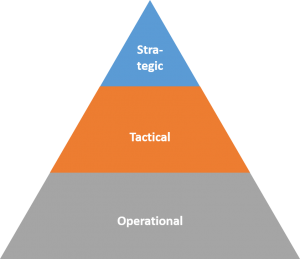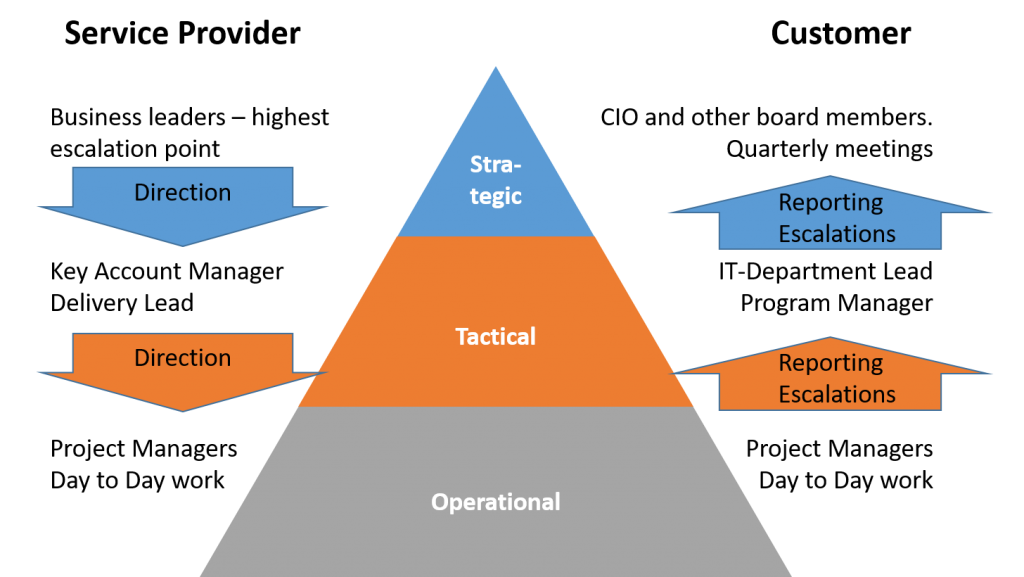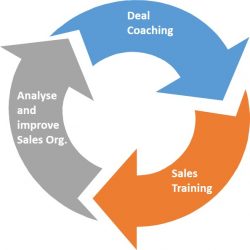Setting up the Governance is one of the key tasks during the Transition phase of all Outsourcing projects. Usually, this task starts in the final stages of the sales phase, when the customer is asking who from the presenting team will be part of the delivery team. Ideally, this question is answered by the provider earlier by getting the right team in front of the customer as early as possible.
So what is the right answer? It is clear that not all persons involved in the sales will also be part of the delivery team, but on the other side, the customer has a valid interest in getting to know those persons that will be their key contacts during the years to come.
A good Governance structure that takes into account the various management levels needed, and that provides a clear escalation path will help to sort out for the client, who from the supplier organisation will work with whom on the customer side.
A typical construct has three levels – Operational, Tactical, and Strategic:

On the operational level, the project leads will work closely together on an almost daily basis to run the project. Some regular meetings like project status, or daily incident status need to be scheduled. Most of this will be quite straight forward.
On the tactical level, the first management level should meet every month or so. The project manager need to report into this “Program Board”, giving an overview on the achievements during the last weeks, and a detailed plan of the weeks to come. This is also the place to discuss issues and problems that could not be solved on the operational level. It will also give guidance to the project management about their focus areas during the next weeks, as well as provide a first layer for commercial discussions.
On the strategic level, the senior management (CIO and Business unit lead) need to discuss the long term planning – looking back at the performance during the last months, and then giving direction about the targets to be achieved in the coming quarters. a common schedule for those “Steering Meetings” is about once a quarter, during a transition when there is lots and lots of change, also more frequent. This meeting will also ensure that all escalations and issues are solved. Further, all extensions, large scope changes (like a new set of applications to maintain, or a new platform to operate) will be discussed and agreed here.
Then the Governance diagram will look like this:

While all this sounds so straight forward, why doesn’t this always work as planned? There are some factors:
- too many people involved on the provider side who need to be positioned in the Governance model
- unexperienced customer who is not able to discuss issues on the levels where they belong to, resulting in constant escalations of nitty gritty stuff to the senior management level, ending up in the senior management taking up the daily management.
- a senior management that is too far away from the deal, resulting in more or less meaningless Steering Meetings, failing to provide urgently needed direction to the levels below
- personalities do not fit together – this needs to be thought through during the time of setup – who will fit with whom. A future post will give an introduction to personality types.
Please comment on your experiences with Governance Setups – successful and failed examples are highly welcome.

